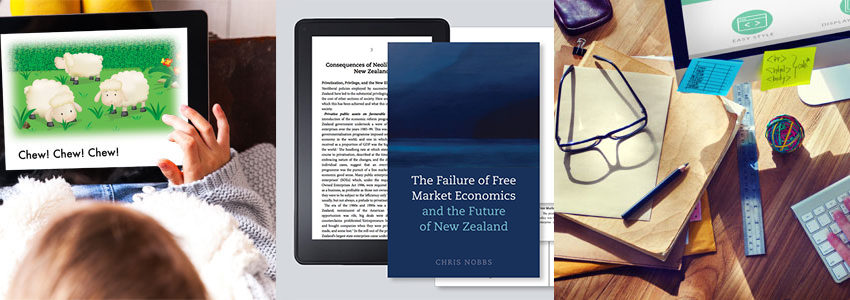Not too long ago, the chalkboard was the norm in school classrooms, but now it’s getting quite rare. Even its successor the whiteboard is making way for multimedia projectors and TV setups. There’s an ongoing shift in the materials being used for teaching and learning; smartphones and tablets are taking their places alongside pens and paper. Learning on a digital platform isn’t just an optional side dish anymore; educators around the globe are now looking at digital methods for conducting the bulk of their training sessions, lessons, and lectures.
So it’s a very exciting time to be designers in the digital learning realm!
Digital learning tools are in a phase similar to when the first iPhone came out – they’re new and they’re very shiny (oh so shiny!). And the things that can be done with them are incredible. We designers feel much like kids in a huge candy store when we think of it all!
Research is also backing up all the possibilities that digital learning tools can offer. A PhD thesis by Dr. Bettie Parsons Barger done at Ohio State University looked at how ebooks could help fourth grade students learn how to read. The study reported that enhanced ebooks helped increase student engagement, improving their reading abilities and increasing their motivation to read more. According to Dr. Barger, what was incredibly exciting was that ebooks didn’t just help students learn how to read other ebooks, but traditional paper books too.
Studies like these illustrate the incredible capability that these new digital learning tools have. They can give teachers and educators new ways of reaching students, helping them find learning and teaching methods that best fit students’ needs.
Another great thing that’s surfaced is that in developing these tools, brand new content doesn’t need to be created. There’s already so much great content out there – it just needs to be adapted and converted to become an effective digital learning tool.
Here’s one way of looking at it: content adaptation and conversion is like taking a paragraph of data and turning it into a chart. It’s basically the same information, but presented in a very different manner. And when used correctly, a chart could communicate the information in a much clearer and better way than a paragraph.
Digital learning tools present an exciting opportunity not only to adapt and convert content, but to improve it, increasing its effectivity in helping students and trainees learn. It would be such a missed opportunity if the chance to add value was overlooked and content was converted to digital just because “that’s the way to go”. With this mindset, the end result would just be what education consultant and commentator Alan November called the “$1000 pencil”. It’s not just about creating the technology, but making sure it’s implemented in a manner where everyone can use it and make great use of it.
And with all this talk about students, teachers and educators need to be looked after, too. These tools are a significant shift from traditional teaching methods, so helping them make the most of them should also be a top priority. Technology is here to make everyone’s life easier, not more difficult.
It’s important to remember that education technology is still–at its core–education. Students and trainees are entrusting a part of their learning success to these learning tools. So even with all this shiny new technology, the same standards of accuracy of content and effectivity of teaching methods still apply. That’s an important responsibility, one that we as designers are bearing in mind at all times, whether we’re creating textbooks or online learning modules.
So what places will learning go as it moves further into the digital world? That’s only limited by our imaginations, really. And if digital tools effectively serve the objectives and needs of educators and students, then everybody wins.
“There is fun to be done! There are points to be scored. There are games to be won. And the magical things you can do with that ball will make you the winning-est winner of all.”
– Dr. Seuss, Oh, the Places You’ll Go
